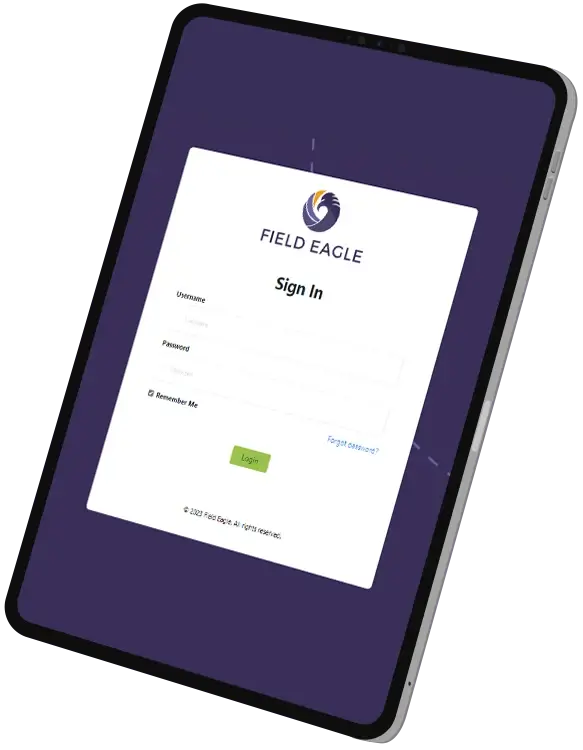When your company manages a fleet of stackers, reclaimers, ship loaders, and conveyors moving millions of tonnes of material, any inspection delays or data gaps can cost more than time—they can cost millions. One global mining systems group needed to regain control over their inspections and ensure equipment reliability across regions and equipment types by implementing standardized global inspections.
With Field Eagle, they transformed their approach from manual processes to a unified digital system that delivers consistency, speed, and data-driven insight.
The Challenge: Paper Chaos Meets Operational Complexity
Their Bulk Material Handling (BMH) equipment operates across mines, ports, and processing plants. These assets include stationary and mobile machines handling overburden, coal, and ore. Yet, inspections were:
- Manual, error-prone, and time-consuming
- Conducted differently across locations
- Delayed in reporting and difficult to track globally
Result: Inconsistent inspections, incomplete data, and increased downtime risk.
The Solution: A Unified Digital Audit Platform for Enterprise Inspections
Field Eagle introduced a standardized enterprise inspection system tailored for BMH operations. It included:
- Custom-built templates aligned with corporate and industry standards
- Configurable audit workflows for different equipment and job sites
- Offline tablet functionality with secure server sync
- Centralized access to inspection data for global oversight
Field Eagle also provided 24/7 support to assist with inspection form creation, training, and reporting, enhancing standardized global inspections.
The Results: Control, Accuracy, and Faster Maintenance Response
The company can now:
- Perform inspections faster and with more consistency
- Instantly generate reports and compliance documents
- Detect equipment issues early with audit trails and health insights
- Benchmark asset performance across global locations using a standardized inspection approach.
With built-in logic and mandatory fields, inspections can’t be submitted incomplete, ensuring quality assurance on the spot.
Strategic Value: Linking Inspections to Asset Management
Field Eagle helped the company:
- Build a full inspection history to support long-term equipment planning
- Prepare instant proposals for repairs or system enhancements
- Integrate with parts catalogs and smart condition monitoring platforms for better global standardized inspections.
The inspection database is now a core part of their operations strategy.
Final Thoughts
Standardizing inspections at scale unlocks speed, visibility, and trust in your data. Field Eagle empowered this mining systems leader to unify processes across sites, reduce risk, and create a feedback loop for smarter maintenance.
Because when your business runs on high-value equipment, standardized inspections aren’t just a formality—they’re your first line of defence.
Standardized global inspections are unified inspection processes that ensure consistent data collection, reporting, and quality standards across all locations and equipment types within an organization. They are critical because:
Eliminate inspection variations between different sites and regions
Ensure consistent data quality for accurate cross-site performance comparisons
Reduce equipment downtime risk through reliable early detection systems
Support regulatory compliance with uniform documentation standards
Enable global asset management with comparable inspection data
For companies managing high-value equipment across multiple locations, standardized global inspections provide the consistency needed for effective operational decision-making.
Companies without standardized global inspections typically encounter:
Manual, error-prone processes that vary significantly between locations
Inconsistent inspection procedures conducted differently across sites
Delayed reporting that prevents timely maintenance responses
Incomplete data collection due to varying inspection standards
Difficulty tracking equipment health across global operations
Increased downtime risk from missed or inconsistent inspections
Poor cross-site benchmarking due to incomparable data formats
These challenges become particularly costly when managing bulk material handling equipment, mining systems, or other high-value industrial assets.
Digital platforms enable standardized global inspections through:
Custom-built templates aligned with corporate and industry standards
Configurable audit workflows adaptable to different equipment types and locations
Offline tablet functionality with secure server synchronization
Centralized data access providing global oversight and reporting capabilities
Built-in logic and mandatory fields preventing incomplete inspection submissions
24/7 support systems for inspection form creation, training, and reporting
Real-time data synchronization ensuring immediate availability of inspection results
These features ensure that all inspections meet the same quality standards regardless of location or inspector.
Key benefits of standardized global inspections include:
Faster inspection completion with consistent, streamlined processes
Improved data accuracy through mandatory fields and validation logic
Instant report generation and compliance documentation
Early equipment issue detection with comprehensive audit trails
Cross-site performance benchmarking using comparable data sets
Reduced equipment downtime through proactive maintenance scheduling
Enhanced regulatory compliance with standardized documentation
These improvements help organizations maintain higher equipment reliability while reducing operational costs and compliance risks.
Standardized global inspections support strategic asset management by:
Building comprehensive inspection histories for long-term equipment planning
Enabling instant repair proposals based on standardized assessment criteria
Supporting integration with parts catalogs and condition monitoring platforms
Creating feedback loops for smarter maintenance decision-making
Facilitating predictive maintenance through consistent data collection
Improving capital planning with reliable asset condition data
Supporting operational optimization through cross-site performance analysis
This systematic approach transforms inspection data into a core component of operations strategy, enabling data-driven decisions about equipment maintenance, replacement, and optimization across global operations.







